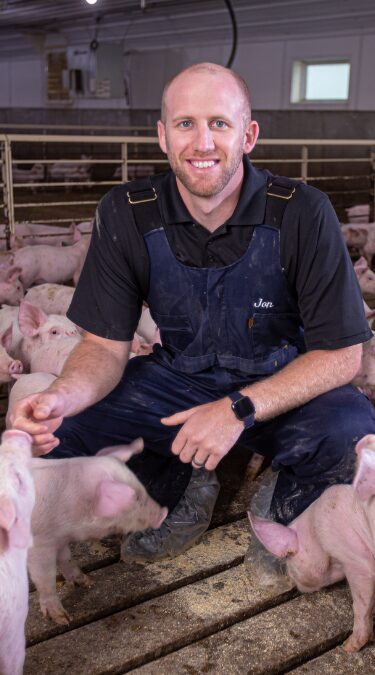Running a family farm comes with unique challenges, especially when managing employee relationships. Whether your team consists of family members or outside hires, selecting the right person within your operation to manage employees is crucial. They do not need know every detail about the operation; in fact, they might not even have farm experience. What matters are their communication skills, attitude, and leadership qualities. A manager’s ability to connect with and motivate team members often outweighs farm expertise.
Here are a few things to remember when welcoming new team members:
- Make Introductions. Make time for introductions. Learn about them, introduce yourself and your team, and share your farm’s values and culture. Establishing a personal connection from the start sets a positive tone. When employees feel acknowledged and valued from day one, they are more likely to integrate smoothly.
- Create Clear Expectations. Clearly define farm goals. Understanding their personal goals can also help align their interests with farm objectives. When employees know what is expected of them, they can work more confidently and efficiently. Regularly review expectations to ensure everyone is on the same page.
- Use Communication Tools. Effective communication is essential for everyone to understand important instructions and updates. Language barriers should not be an excuse for poor communication. Utilize tools like cell phones, translation apps, or visual aids to bridge the gap. Find the methods that work best for your team and implement them consistently.
- Use an Organizational Chart. Define roles and responsibilities clearly and share with your team. Even with a hierarchy, ensure open lines of communication with all employees. Regular check-ins with team members at all levels can help address issues before they escalate.
- Outline Clothing Guidelines. Provide clear guidelines on appropriate work attire. Don’t assume they know what to wear for farm tasks. Specify the types of clothing and protective gear needed for different tasks to ensure safety and comfort.
- Clarify Biosecurity Guidelines. Failing is not an option. Provide regular training sessions to keep everyone up-to-date on best practices and new health protocols. Be sure to inspect what you expect.
- Provide a Farm Orientation. Give your new employee a guided tour of your farm. It may be helpful to hop in the truck and drive to the various barn sites that will be his/her responsibility. Outline the most efficient and/or biosecure routes to travel.
- Define Work Schedules. Be explicit about work hours and ensure team members know how to log them accurately. Providing a structured schedule helps maintain a balance between productivity and rest, reducing burnout and increasing job satisfaction.
- Outline Farm Vehicle Use. Set clear expectations for the use of farm vehicles, including fueling, parking, and required maintenance protocols. Proper training on vehicle use can prevent accidents and ensure that all equipment is well-maintained.
- Teach Farm Safety. Take time to provide detailed training on how to operate and maintain farm and livestock equipment. Specific training might include approved methods for operating a skid loader, working with augers, troubleshooting heaters and electric motors, and safely climbing a feed bin. The safe way is the only way!
Remember, the most valuable resource on the farm is your human resources. Investing time in your employees not only boosts their morale but also enhances the overall productivity and success of your farming operation.











